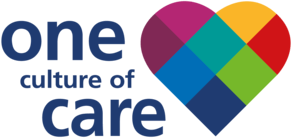We’ve carried out more than 16,000 digital ECGs since we went live last December.
Cardiologists can now review the results instantly in EPR, and often remotely, which speeds up diagnosis in what is often a crucial time for treatment.
Our Chief Information Officer, Consultant, Graham Walsh, said: “We yet again owe this achievement to everyone who uses the ECG management system.
“Their hard work in introducing the digital ECG, from cardiology to A&E, is paying off. It’s been embraced and we’re seeing the benefits.
“When you compare us to other sites, who have not achieved that number after a few years, let alone weeks, it’s a great achievement, made more impressive as we launched across all departments at once”.
Graham recalled the immediate impact of digital ECGs on go-live day.
“A patient in A& E had an acute cardiac problem. Before the ECG would have to be reviewed in the department before a decision is made. In this case the cardiologist could review the ECG remotely and the patient was treated much more quickly. In the case of heart issues - minutes mean myocardium. So the patient had a much better prognosis because the ECG could be reviewed more quickly.”
There is still some work to do in educating some doctors on how to request and sign off ECGs, but this is in hand with support from the Training team within Health Informatics
Graham added: " We are just excited that we have got rid of another piece of paper in our journey to a paper free trust. I would like to take this opportunity to thank everyone for their hard work in bring digital ECGs to the trust and to quote Chief Operating Officer, Helen Barker ‘we delivered digital ECGs in a heartbeat!’”
Some of the benefits of digital ECGs include:
- Reduce the need to input demographic details on to the ECG cart. These automatically populate from EPR, reducing transcription errors and time taken to initiate the test
- Improve security and effectiveness of uploading data to current ECG system.
- Ability to seek clinical advice instantly
- Improved efficiency in the requesting process
- Ability to compare a previous ECG on the same screen as the current one
- Reduction in costs associated with printing, scanning and uploading


